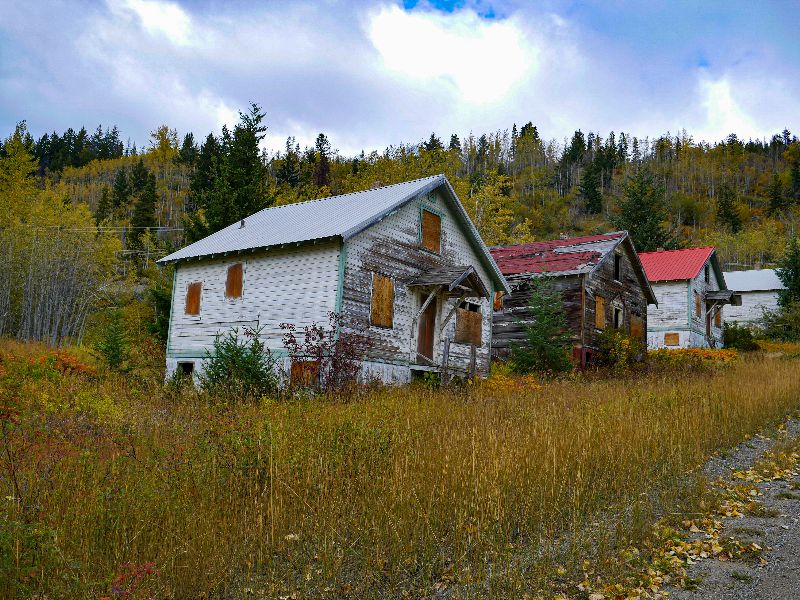

The population dwindled until the 1940s, when the last residents finally shipped out. By the 1880s, it had outgrown its meager infrastructure, and a succession of harsh and deadly winters convinced many of its prospectors to move to more profitable locales. Like most boomtowns, Bodie eventually went bust. Thanks to larger-than-life accounts of whiskey-fueled shootouts, the outpost soon earned a reputation as a “sea of sin” filled with rough men, prostitutes and opium dens.

Gold-crazed prospectors flocked to the settlement at a rate of more than two-dozen per day in the late-1870s, and its population eventually soared to some 10,000 people. In recent years, Greek and Turkish Cypriots have held talks regarding reopening the former jet-setters’ haven, but experts estimate that it would take upwards of $12 billion to make its decrepit buildings livable again.īodie, California was officially founded in 1876, after miners stumbled upon rich deposits of gold and silver in its hillsides.
#Hidden ghost town in woods windows#
What is left stands as a spooky time capsule of the 1970s, including bellbottoms in shop windows and 40-year-old vehicles still parked at car dealerships. Trees have grown through the floors of restaurants and homes, and most of the former residents’ belongings have been looted or destroyed. The few intrepid explorers who have ventured into the no man’s land describe the resort as a crumbling ghost town. Most assumed they would return once the fighting stopped, but ongoing political strife has seen Varosha waste away behind a heavily-guarded barrier ever since. Varosha’s 15,000 residents fled the city in terror, leaving their valuables and livelihoods behind. All that changed in August 1974, when Turkey invaded Cyprus and occupied its northern third in response to a Greek nationalist-led coup. The suburb boasted a thriving tourism economy, and celebrities such as Elizabeth Taylor and Brigitte Bardot were known to take in the sand and sun at its high-class beachfront hotels. In the early 1970s, the immaculate beaches of Varosha, Cyprus served as one of the most popular millionaires’ playgrounds in the Mediterranean. The island was officially opened to tourists in 2009, and it has since served as the inspiration for the villain’s hideout in the 2012 James Bond film “Skyfall.” Many of its high-rises are still filled with old televisions and other relics from the mid-20th century, and its once-teeming swimming pools, barbershop and school classrooms now sit in shambles. Most workers found the cramped conditions unlivable, and the city was promptly abandoned after the mine closed in 1974.įorty years of neglect have left Hashima a dilapidated ruin of collapsed staircases and condemned apartments. By the 1950s, the 16-acre rock was packed to the gills with more than 5,200 residents. Hashima remained a hive of activity for the next several decades, especially during World War II, when the Japanese forced thousands of Korean laborers and Chinese POWs to toil in its mines. It was later purchased by Mitsubishi, which built some of the world’s first multistory, reinforced concrete buildings to house its bursting population.

The small island off the coast of Nagasaki was first settled in 1887 as a coalmining colony.

Today, Hashima Island is a vacant labyrinth of crumbling concrete, sea walls and deserted buildings, yet it was once among the most densely populated places on the planet. The site is also home to a museum, which holds a collection of relics and mementos recovered from the rubble. The facades of dozens of brick buildings and charred storefronts still remain, as well as graveyards of rusted cars and bicycles, scattered sewing machines and unused tram tracks. Only a handful of people managed to survive by playing dead and later fleeing to the forest.Ī new Oradour-sur-Glane was built nearby after the war ended, but French President Charles de Gaulle ordered that the burned-out ruins of the old town be left untouched as a monument to the victims. The men were taken to barns and machine-gunned, and the women and children were locked in a church and killed with explosives and incendiary grenades. In what is believed to have been an act of revenge for the town’s supposed support of the French Resistance, a Nazi Waffen SS detachment rounded up and murdered 642 of its residents and burned most of their houses to the ground. On the afternoon of June 10, 1944, the village of Oradour-sur-Glane was the scene of one of the worst massacres of French civilians during World War II. Ruins of the martyred village Oradour-sur-Glane, photographed in 2014.Īndia/Universal Images Group/Getty Images


 0 kommentar(er)
0 kommentar(er)
